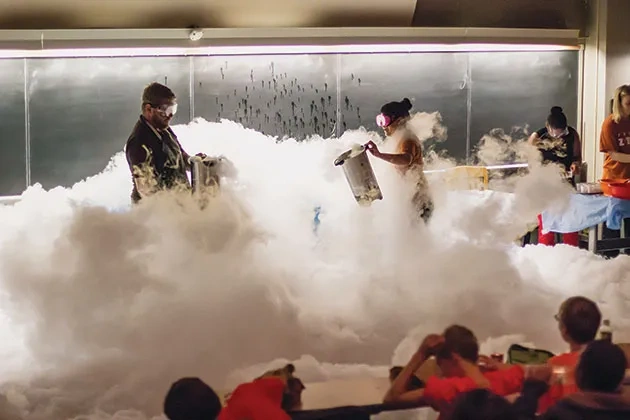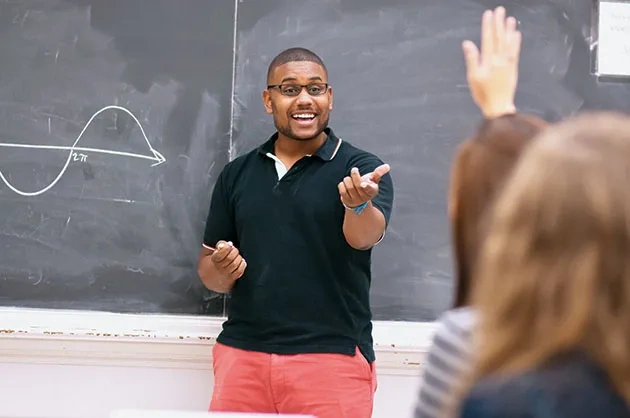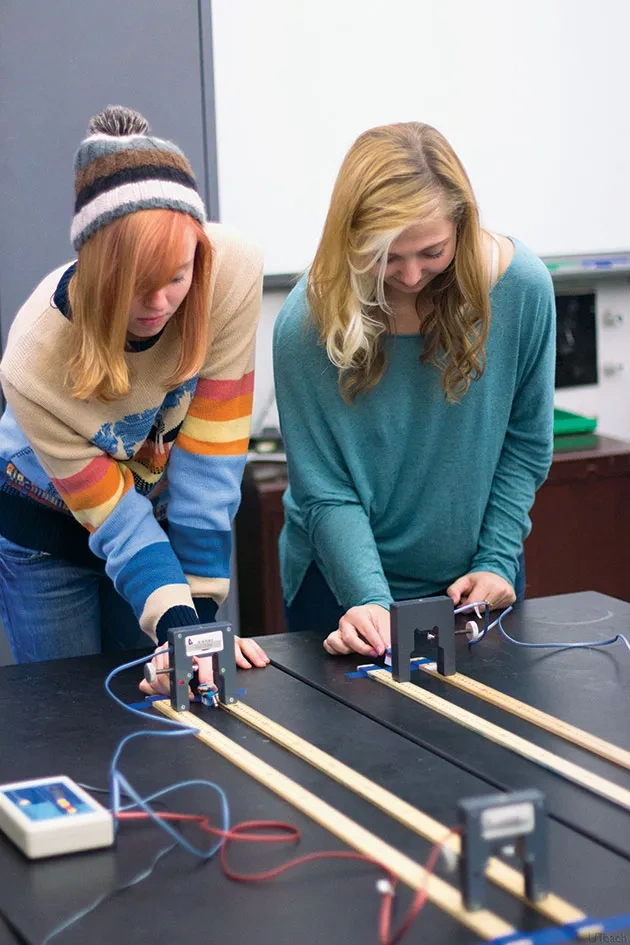The Art of Teaching
UTeach has been preparing America’s teachers for 20 years.

Wander along the fourth floor of T.S. Painter Hall and you’re likely to encounter goggle-clad co-eds tackling science projects in a lab, or a peer group excitedly chatting about lesson plans while surrounded by stacks of brainy board games. These students are all part of UTeach, an innovative STEM (science, technology, engineering and math) teacher certification program launched two decades ago on the Forty Acres. What was once a fledgling program located on the top floor of the Hogg Building, UTeach currently has more than 6,000 students enrolled at UTeach programs across the country and have graduated about 3,300 aspiring math and science teachers at 45 universities nationwide.
The idea for a new and improved teacher preparation program at UT was born out of circumstance: Cuts by the Texas Legislature to undergraduate education degree programs had caused UT’s production of qualified teachers to plummet at an alarming rate. Mary Ann Rankin, then-dean of the College of Natural Sciences, recognized the need for a student-focused way to recruit STEM majors to teaching—and the need to do so without adding time or cost to their degrees. So in the summer of 1997, a group of outstanding Texas high school math and science teachers were called on to design a curriculum that provided both a deep subject knowledge and extensive teaching opportunities out in the field.
“The goal wasn’t to be unique,” says UT physics professor Michael Marder, co-founder and co-director of UTeach. “The goal was to take every good idea those teachers had and simply bring them to bear all at once in the same place.”

The resulting program—a collaboration between the College of Natural Sciences and the College of Education—did just that. Every UTeach graduate enters his or her first year of professional teaching with at least seven semesters of experience in elementary, intermediate, and high schools. Thanks to four years of project-based, hands-on coursework, they’re confident in the classroom and more likely to stay there: 86 percent of UTeach grads are still teaching today, and 61 percent of them are working in economically disadvantaged or minority-majority schools.
“You get to see how math and science education builds from elementary all the way up to high school,” says UTeach alumna Brianna Rapini, BS ’05. “When I graduated, I really felt confident that I knew how to manage a classroom and, most importantly, I felt confident in my ability to engage with my students.”

To do so, Rapini regularly calls upon technology to teach tough subjects in her high school biology classroom. She’s the co-creator of The Amoeba Sisters, a YouTube channel working to demystify science using quirky, relatable videos, GIFs, and comics. Her first video, posted just over three years ago, covered enzymes by comparing them to the classic arcade game Pac-Man. Today, the channel’s videos have more than 12.8 million combined views, and Rapini credits internships she got through UTeach’s outreach program—both at Girlstart and the Austin Zoo—for shaping her out-of-the-box approach.
Over the last two decades, similar praise for the program has run up the chain to the U.S. Department of Education and former President Barack Obama, who recognized UTeach as setting the standard for STEM education in the United States. Financial backing from The National Math & Science Initiative, Exxon Mobil Corporation, and the Howard Hughes Medical Institute has made expansion to 44 other universities possible in 21 states and the District of Columbia. But, with ever-advancing technology and a seemingly perpetual shortage of qualified teachers, an urgency behind STEM education still exists, and Marder recognizes that UTeach’s work is far from over.
“With a community of 45 universities, we’re just beginning to reach the size where we should be able to have a louder voice in the discussion,” he says. “The slogan at UT is, ‘What starts here changes the world,’ and with UTeach, we have that chance. This is an example of how UT can do it.”
From top: An indoor thundercloud demo during UTeach Outreach summer camp; now-UTeach graduate Trevon Jones, BS, BA '13, practicing a demo lesson when he was still a student. Credits: Pedro Soto, Marc Tway (2)






